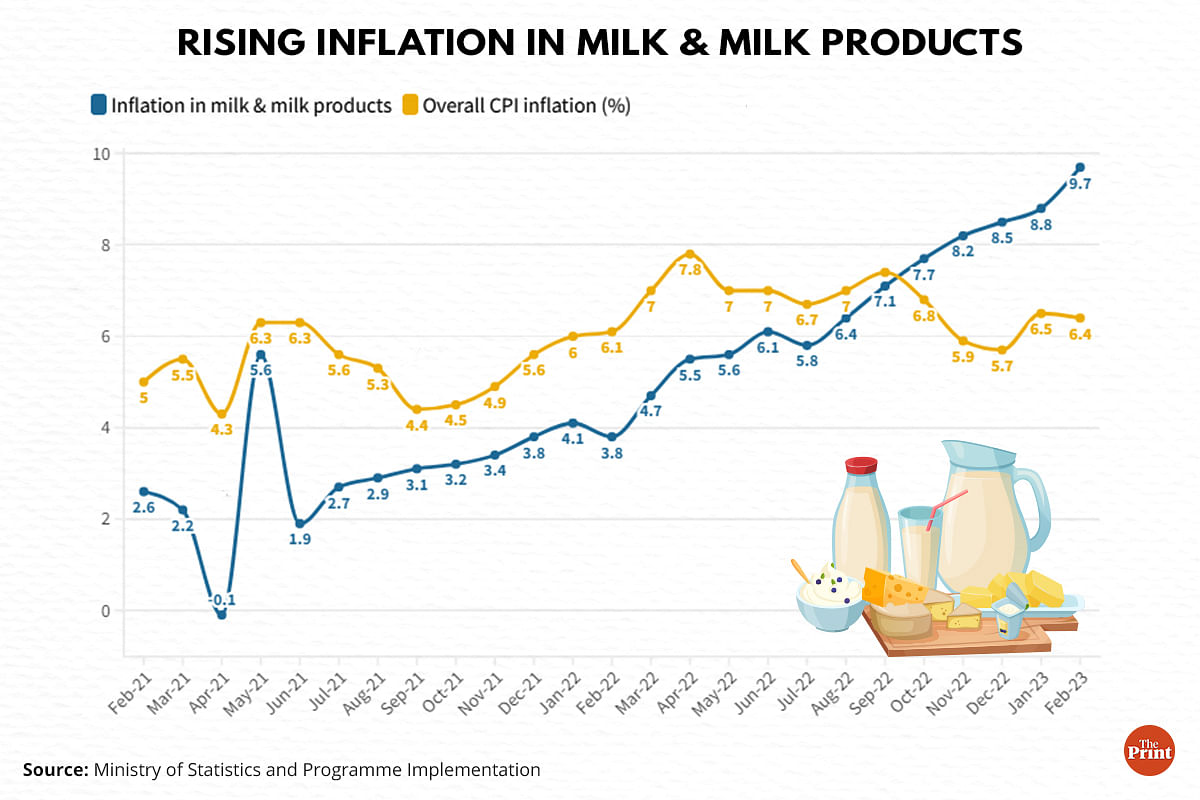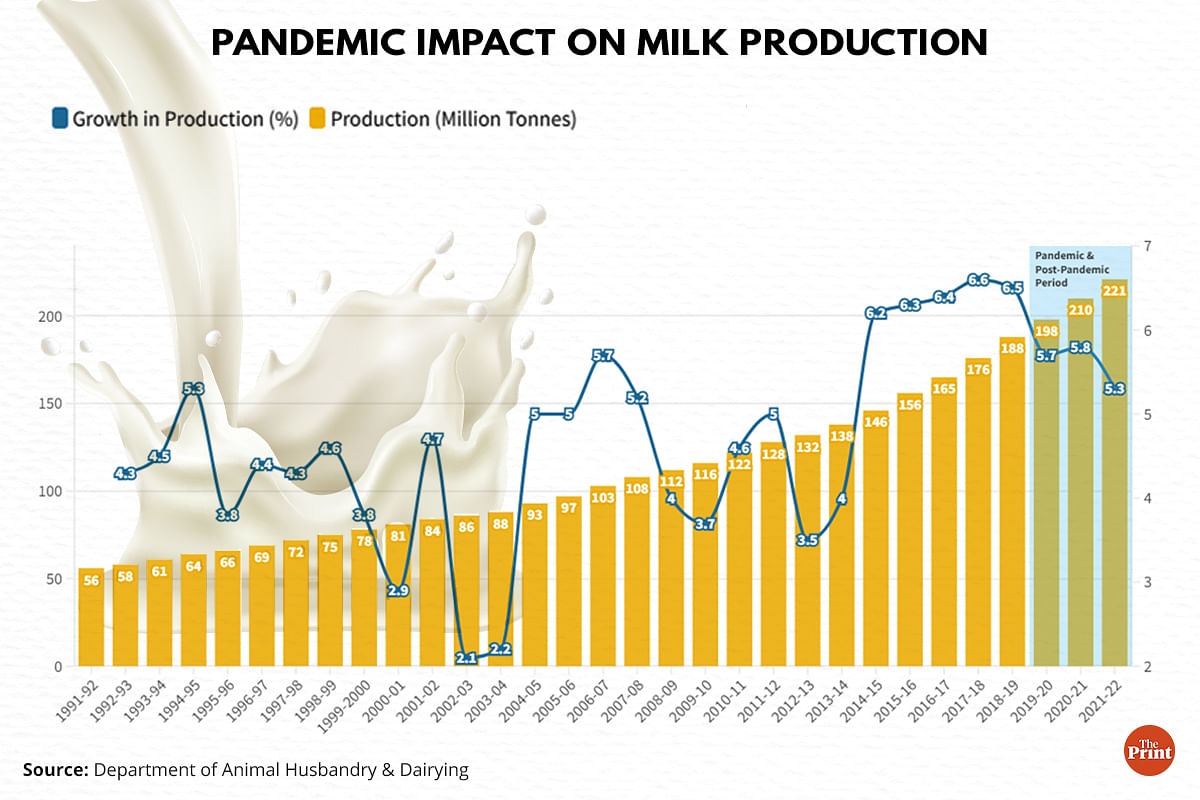Inflation in the prices of milk and milk products has accelerated almost continuously for the last 20 months and, in the last five months, it has consistently surpassed the overall level of price rise in the country.
The reason for this, according to people closely associated with the milk industry, could be a combination of supply and demand factors, with the pandemic playing a key role.
Analysis by ThePrint has found that the rate of inflation in the ‘milk and milk products’ category of the Consumer Price Index has accelerated nearly every month since July 2021 to February 2023, apart from marginal dips in February 2022 and July 2022. The data also shows that, since October 2022, inflation in milk prices has surpassed the general rate of price rise in the country, and this gap has been widening.

While February 2023 is the latest period for which we have inflation data, there is more recent data on the actual price of milk.
The average price of one litre of milk has risen to Rs 56.8 on 4 April, 2023 — the latest date for which there is data — from Rs 51.4 a year earlier, according to price data from the Department Of Consumer Affairs. This is an increase of 10.5 per cent in one year.
“The main reason for the increase in milk prices is due to a rise in input costs, a part of which is due to the rise in fodder prices. The price of concentrates and minerals used in the composite feed for milch cattle has also risen,” B.S. Chandel, former Principal Scientist at the National Dairy Research Institute, told ThePrint.
“The reason for the rise of the price of these inputs is because of the supply disruptions due to the Covid-19 pandemic, and the subsequent carry-on effects,” Chandel said, adding that, “Production suffered during that period.”
In any case, he explained, the supply of feed in the country is only 60 per cent of the demand, and so the rising input prices of feed have had a knock-on effect on the price of milk.
R.S. Sodhi, former managing director of Amul and the current President of the Indian Dairy Association, said, while supply issues certainly have a part to play, the issue also lies in the fact that demand for milk products has increased.
On the supply side, he said that the pandemic-induced national lockdown and subsequent regional lockdowns meant that demand for milk fell sharply, which had knock-on effects on the entire industry.
“Although demand fell during the lockdowns, it is not as if the milk-producing animals stop producing milk, and so the price of milk and its products fell sharply,” Sodhi explained. “As a result, in the next year, the farmers perhaps did not try to increase production as much as they could have, had the prices not crashed.”
Indeed, data from the Department of Animal Husbandry & Dairying shows that, although the overall production of milk in India has increased every year, the rate of growth of production has fallen sharply since the pandemic.

“Another factor is that the pandemic disruptions meant that artificial insemination of the cattle could not be done during that period, which meant that calving was delayed, the impact of which is felt only two years down the line,” Sodhi said.
However, this factor is not yet documented, according to Chandel.
“This fact has not come into the records,” Chandel said. “It is being presumed by the scientists that calving might have been delayed, but it has not entered the records as yet.”
Both Chandel and Sodhi agree that the demand for milk and milk products has increased in the past few years with Chandel saying this is due to an increase in purchasing power, and Sodhi putting it down to greater awareness about including protein in diets.
However, while Sodhi says the increase in demand is the major cause behind the rise in milk prices, Chandel feels the rise in input prices is the driving factor for the rise.
Further, reports indicate that lumpy skin disease, which has been affecting cattle in India to a significant degree over the past year, has not had much of an impact on the production of milk in the country. Anecdotal evidence suggests that the disease has largely been affecting cattle that are already old and sick, and so not producing much milk in any case.



























